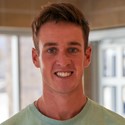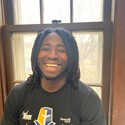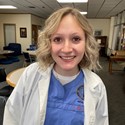MMU Nursing Faculty Pursuing Nurse Leadership Program
April 11, 2024
This story was originally published in the Yankton Daily Press & Dakotan and republished here with its permission. © Copyright 2024 yankton.net
A shortage of nursing school faculty is restricting nursing program enrollments, a significant segment of the nursing workforce is nearing retirement age, and changing demographics signal a need for more nurses to care for America’s aging population.
Those are just three of the reasons the American Association of Colleges of Nursing (AACN) cite as an explanation for the nation’s nurse shortage. While this dilemma won’t be resolved overnight, nursing professionals, such as Mount Marty University’s (MMU) Michele Rohde, Assistant Professor of Nursing and Nursing Simulation Coordinator, are taking steps to enhance the effectiveness of nurse leaders in nursing education and the healthcare industry. Rohde, who teaches community Health Nursing to MMU senior nursing students and is a Family Nurse Practitioner, recently enrolled in a 10-session Nurse Leadership Program offered across the state by the South Dakota Association of Healthcare Organizations (SDAHO). The program goal is to equip hospital and post-acute care nurse leaders with leadership skills needed to be a successful, supportive leader in their organization.
“I am one of several other nurses in South Dakota who is taking this course,” Rohde says. “The course is taught through a variety of modalities that include lecture, discussion, reflection, networking, opportunities for networking with nurse leaders, and completion of an independent project. I’m currently pursuing my Doctorate of Nursing Practice (DNP) degree with a focus on leadership. I believe this opportunity will offer a foundation to build upon with the content I’m learning in the DNP coursework.”
Rohde notes that effectively leading a nursing team is similar to participating in an athletic team. The ability to communicate well and work cooperatively can make all the difference in the outcome of the effort.
“In either scenario, we have to work together to be in the ‘win’ column,” Rohde says. “If any team member is too much about themselves, that team will not be as effective as they could be. Working together to accomplish a task is much the same in the nursing industry as in an athletic setting.”
The global nursing shortage, which Rohde notes could intensify over the next five to 10 years, increases the need for nurses to work together to provide health care in a hospital, clinic, or in a educational arena.
“As Baby Boomers age, we’re seeing more comorbidities (coexisting health conditions) such as diabetes and heart problems, and more mental health issues than we experienced when I first entered nursing,” Rohde says. “At the same time, a significant number of nurses left the nursing field during COVID and Baby Boomers are nearing retirement age. Now we also have the science to help people live longer.”
Topics in the SDAHO program include:
- Crucial conversations (conflict resolution)
- Board of Nursing Role
- Nursing Inquiry (Evidence-Based Practice, Quality Improvement, and Research)
- State Advocacy: Review of Current Legislative Session
- Health Ethics
- Maintaining Leadership Development
- Human Resources: Legal Aspects of Management
- Healthcare Finance
- Innovative Leadership: Managing Change
The training is designed to provide nurse leaders education that can immediately be applied to their current role. Content is taught by South Dakota nurse leaders and other South Dakota healthcare industry experts regarding current best practice, applying change management principles to real world concerns, and developing critical communication skills in a fast-paced healthcare field.
“I believe my students can benefit from the knowledge I’ll gain regarding critical thinking skills, communication skills, and how to work as a team toward a common goal,” Rohde says. “The training began in January 2024 and will conclude in September at the SDAHO annual convention. I have already met people from a variety of organizations with many different backgrounds. That offers an excellent opportunity for learning from one another as well as guiding one another due to background disciplines.”
Rohde is the only nurse from education. The other participants are working “at bedside” in acute, primary, long-term, or mental health care.
“I expect that this training will help enable my understanding of what leadership skills are needed in today’s nursing workforce,” Rohde says. “Hopefully what I share with current MMU students will help them as they enter the nursing workforce to pursue a leadership role. Our nurses today need more skill than ever in their work to meet healthcare demands.”
###
About Mount Marty University
Founded in 1936 by the Benedictine Sisters of Sacred Heart Monastery, Mount Marty University is South Dakota's only Catholic institution of higher education. Located along the bluffs of the Missouri River in Yankton, with additional locations in Watertown and Sioux Falls, Mount Marty offers undergraduate and graduate degrees focusing on student and alumni success in high-demand fields such as health sciences, education, criminal justice, business, accounting, and more. A community of learners in the Benedictine tradition, Mount Marty emphasizes academic excellence and develops well-rounded students with intellectual competence, professional and personal skills and moral, spiritual and social values. To learn more, visit mountmarty.edu.







